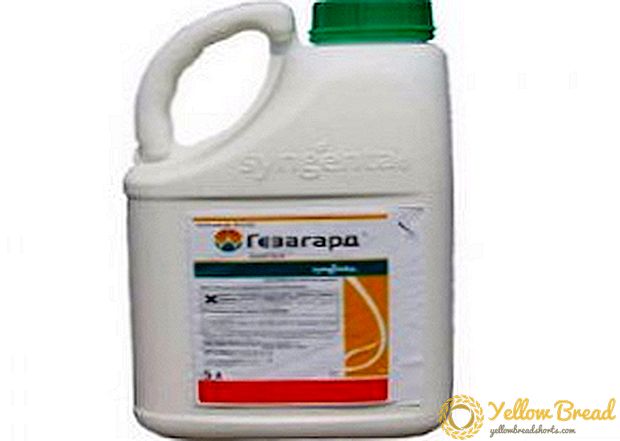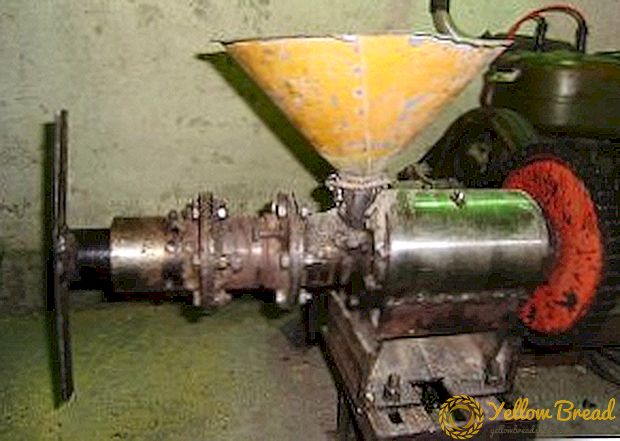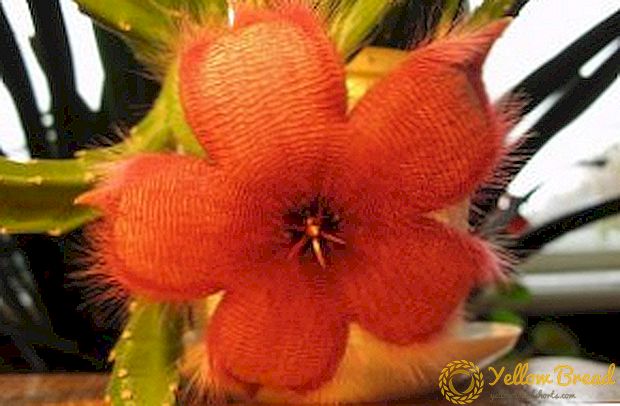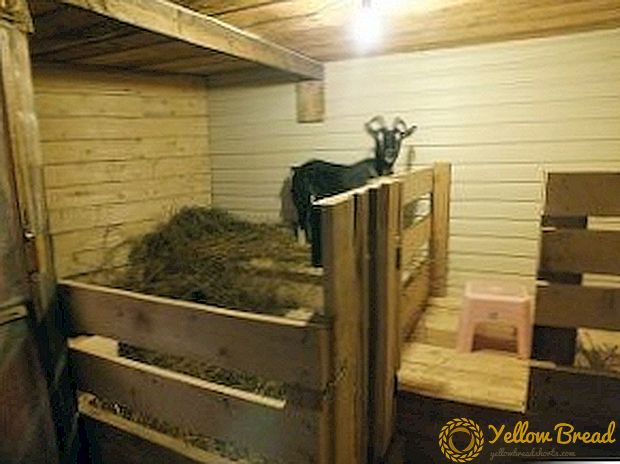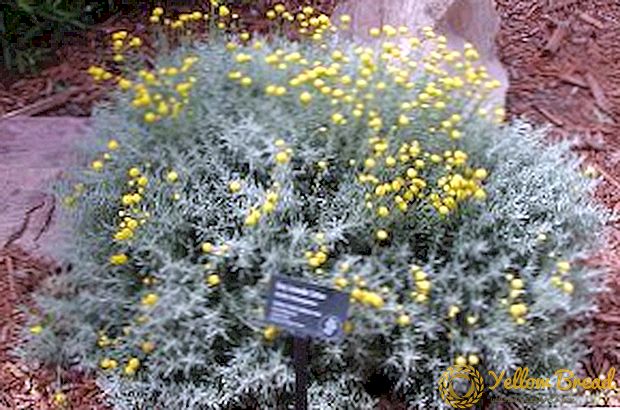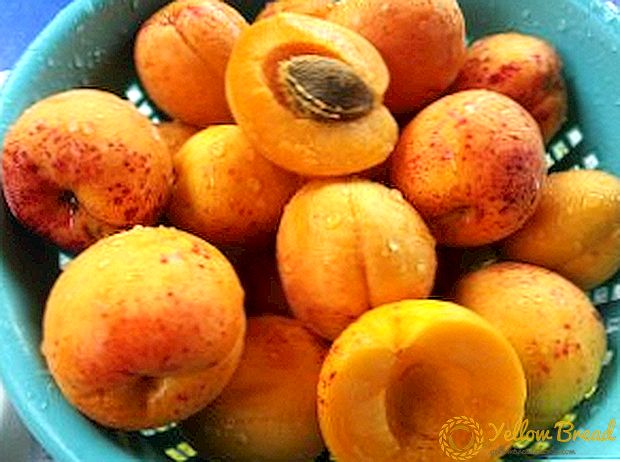 Each makes its own demands on the quality and characteristics of the vegetable: taste is important to someone, keeping quality is important to someone, shape and rich color to someone. All this - the criteria by which you can navigate, picking up the grade. All varieties of carrots belong to eight main varieties: "Amsterdam", "Nantes", "Flaccus", "Shantenay", "Berlikum", "Mini-carrots", "Parisian carrot" and transitional varieties of carrot. Each of the types brings together varieties with similar characteristics.
Each makes its own demands on the quality and characteristics of the vegetable: taste is important to someone, keeping quality is important to someone, shape and rich color to someone. All this - the criteria by which you can navigate, picking up the grade. All varieties of carrots belong to eight main varieties: "Amsterdam", "Nantes", "Flaccus", "Shantenay", "Berlikum", "Mini-carrots", "Parisian carrot" and transitional varieties of carrot. Each of the types brings together varieties with similar characteristics.
We will consider one of the universal varieties - "Vita Long", which belongs to the flakka cultivar, let us familiarize with its taste and quality indicators and growing conditions.
- Description and photo
- Characteristics of a variety
- Advantages and disadvantages
- Choosing a place to grow
- Lighting and location
- Soil type
- Sowing seeds
- Preparation of planting material
- Sowing scheme
- Grade Care
- Possible diseases and pests
Description and photo
This is what the "Vita Long" variety looks like. We see in front of us a large-sized carrot, conical in shape, characteristic of all Flakka. It has a small weak core; According to the description of many gardeners - very sweet and quite juicy.The length of the root crop reaches 25-35 cm and 3.5 cm in diameter, has a rich juicy pigment. The root mass ranges from 100-250 g, average indicators - 160-170 g. 
Characteristics of a variety
"Vita Long" refers to medium-late varieties, seeds are sown in May - early June and harvested in late September. The carotene content is lower than that of the Amsterdam and Nantes varieties, but only slightly. The variety has good keeping quality and is resistant to mechanical damage, which makes it very transportable. During 8 months of storage (end of September - end of May), under different storage conditions it has the following percentage of weight loss:
- sand storage - 5.2%;
- in boxes - 4.6%;
- in plastic bags - 3.5%.
The rate of absolute marriage is very low, that is, root crops that have completely lost their properties and then uncommon - 1%.When stored in bags, carrots are often affected by white rot - about 24% of the crop, the percentage drops significantly when stored in boxes - about 15%, although the percentage of weight loss increases with such storage 
"Vita Long" is suitable for widespread use in cooking. Including, the roots are quite juicy and soft for use in preparing children's smoothies or juices. However, for these purposes, it is still better to choose more juicy varieties: "Children", "Karotan", "Emperor" or "Honey-sugar".
Advantages and disadvantages
Advantages and disadvantages are determined by the requirements put forward to the variety. Of the advantages can be called:
- keeping quality;
- small weight loss during long-term storage;
- undemanding to growing conditions;
- comparative resistance to fungal diseases;
- good taste: the fruit is quite juicy with sweet pulp.
 The disadvantages are rather arbitrary and are rather the characteristics of the variety, rather than the real disadvantages:
The disadvantages are rather arbitrary and are rather the characteristics of the variety, rather than the real disadvantages:- there are varieties sweeter and juicier, such as "Karotan", "Sweet tooth", "Sankina love" or "Emperor";
- there are varieties with better keeping quality, but the worst gastronomical qualities: “Shantone Skvirskaya” or “Narbone”.
Choosing a place to grow
When choosing a place for carrots in your garden, take into account such important parameters as lighting, soil type, types of plants with which the carrots will coexist. And, of course, ensure that you have a good approach to future plantings so that you don’t have to stand around the rows when caring for carrots.
Lighting and location
Choose a well-lit area, not shaded by other, higher cultures. If the neighborhood is inevitable - make sure that the carrots are located south of their tall neighbors. With a strong lack of light, there may be a drop in yields of up to 30% and a loss of commercial appearance of the root crop. 
Soil type
Carrots need fertile soils. Ideal are well-permeable to air loamy and sandy loam soils, sod-podzolic, black soil or domestic peat.Acidity should be neutral, minor deviations in the direction of the acidic reaction are permissible. In a place suitable for carrots, the water should not stagnate, as this adversely affects the taste of the root, making it tasteless and unpleasantly cloying.
Good precursors for carrots are plants of the nightshade family (tomatoes, potatoes), pumpkin (cucumbers, squash), legumes (beans, beans). Do not fit the plots from under crops with similar diseases and pests: dill, parsley, parsnip, cumin.
Sowing seeds
"Vita Long" is better to plant in the spring, as the roots from autumn sowing have low keeping quality. To get a crop in the middle - the end of September, planting should start in mid-May. 
Preparation of planting material
Preparation of seed material includes softening of the stratum corneum and disinfection:
- Soak. Even fresh carrot seeds have a low germination rate - about 50-60%. To improve this indicator, seeds are soaked in hot water for 4-5 hours or in water at room temperature for a day.After removing the planting material from the liquid, it is dried at room temperature until flowability.
- Disinfection. If the seeds were stored in conditions of high humidity or you have other reasons to suspect the presence of fungal spores, for sure it is better to carry out prophylaxis. For the prevention of fungal and some other diseases, not soaked seeds are immersed in a 0.1-0.3% solution of potassium permanganate (about 1 g of potassium permanganate per 200-300 ml of water) for 1-1.5 hours, then washed with running water. A solution of zinc sulphate (20 mg per 100 ml of water) is also suitable for disinfection, which can be bought at any agricultural store.
Sowing scheme
Sowing scheme is calculated based on the size of the root and bulky haulm. The more these indicators - the more freely sow carrots. For the "Vita Long" variety, the planting pattern is as follows:
- the depth of the grooves should be 3-5 cm;
- seeds lower approximately at a distance of 1-2 cm from each other;
- the distance between the grooves for varieties with large tops should be at least 15-20 cm, otherwise it will be difficult to care for the plants.
 Not only root crops are suitable for food, but also tops.Dried tops brew tea, which has a beneficial effect on the state of blood vessels, especially with varicose veins, and stimulates the processes of the epithelium.
Not only root crops are suitable for food, but also tops.Dried tops brew tea, which has a beneficial effect on the state of blood vessels, especially with varicose veins, and stimulates the processes of the epithelium.Grade Care
Carrot care is minimal: for grown plants, it comes down to periodic watering and weeding, sometimes to thinning the beds, and during germination to loosening the soil. The most important point for the whole growing season is the period when the carrots have not yet sprung, at this time it is very important to prevent the formation of a crust on the surface.
Loosening. Usually, the need for a procedure arises after the rain: the earth's surface is compacted and prevents air from penetrating into the deeper layers of the soil. For crops such as carrots, surface loosening to a depth of about 5 cm is suitable. For this purpose, it is convenient to use light rakes with short and frequent teeth, or special garden rippers.  Watering. Immediately after planting and before germination, the seeds require a high moisture content in the medium. If the seeds were pre-soaked and planted under the film - before the emergence of sprouts they should have enough moisture introduced during planting. Another thing, if the seeds are planted in open ground, there is no need to do without watering. Let's talk first about the irrigation technique: this should be done very carefully, because the seeds are close to the surface and a strong jet of water can either knock them out onto the surface or “hammer” deeper into the soil, which will make germination difficult. It is best to use a special nozzle-sprayer, which will provide the optimal pressure and uniform distribution of the liquid.
Watering. Immediately after planting and before germination, the seeds require a high moisture content in the medium. If the seeds were pre-soaked and planted under the film - before the emergence of sprouts they should have enough moisture introduced during planting. Another thing, if the seeds are planted in open ground, there is no need to do without watering. Let's talk first about the irrigation technique: this should be done very carefully, because the seeds are close to the surface and a strong jet of water can either knock them out onto the surface or “hammer” deeper into the soil, which will make germination difficult. It is best to use a special nozzle-sprayer, which will provide the optimal pressure and uniform distribution of the liquid. 
Possible diseases and pests
The main pest of carrots, terrorizing crops - carrot fly.
These are 4.5 mm long pests whose larvae parasitize carrot roots. The fly lays eggs in the soil around the carrots, where in a humid and warm environment they develop to larvae. "Vita Long" is not very susceptible to fly attacks, as the pest settles mainly on more succulent and small varieties, but reinsurance will not be superfluous.You need to start prevention with loosening the soil and thinning too thickly growing landings, so you will create unfavorable conditions for the development of insects and much of them should die. Of the chemical means of protection can be called drugs "Vega", "Decis Profi", "Inta-Vir", "Aklellik", each of them has an instruction on the reverse side of the package.  A good agrotechnical device against a carrot fly is planting onions in between the carrots. The benefits of this double, because the smell of onions scares the carrot fly, and the smell of carrots - onion.
A good agrotechnical device against a carrot fly is planting onions in between the carrots. The benefits of this double, because the smell of onions scares the carrot fly, and the smell of carrots - onion.
Medvedka
Insect 3-5 cm long, very voracious, threatening not only the harvest of carrots, but also many other crops. Over the years, the practice of gardeners have developed many ways to deal with Medvedka and the Internet has a lot of information about this. For ourselves, we note the drug "Medvetoks". These are water-insoluble granules, which are dropped in between rows, and then poured with water. Attracted by the smell, bears eat poison, which is effective after 2-3 hours. When complying with safety rules, the drug is not dangerous to humans and animals, but is toxic to bees and fish.
From the popular methods, the petals of asters can be called, but in this way the desired effect is not always achieved. 
Wireworm
Adult and larvae of the wireworm.
Wireworm is a larva of a click beetle that feeds on the roots and roots of some cereals and plants of the family of the nightshade. The wireworm does quite a lot of damage, but it is very sensitive to nitrogenous fertilizers and drugs that are used against carrot flies.
Of the diseases carrots are mainly affected by fungal diseases: black rot, patio rot, bacterial rot. Rot develops very quickly with high humidity and low temperature. A good prophylaxis of fungal diseases is pre-sowing seed treatment with potassium permanganate and autumn soil treatment with Baikal EM-1, Baikal EM-5, Baktofit, Trichodermin and other similar fungicides. You can also use Bordeaux liquid or Oxyhoma 2% solution. Copper oxychloride is a popular remedy for fungal diseases, but it is not recommended to use it at the site for sowing carrots, as the drug has a negative effect on the taste of the root.
So, if you are interested in a large-fruited, high-yielding variety with high keeping quality and good taste, you will surely be satisfied with the results of growing carrots "Vita Long". Follow the instructions and collect a good harvest. Good luck! 

